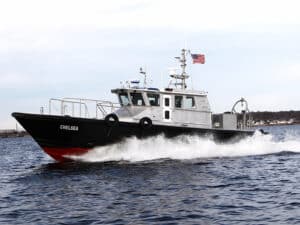
Foss to build first three tugs in new Arctic Class
Written by Nick Blenkey AUGUST 27, 2012 — “At Foss, we innovate,” said Foss Maritime Company President and CEO Gary Faber, as the company announced it will build the first three tugs in an innovative Arctic Class of tugs.
AUGUST 27, 2012 — “At Foss, we innovate,” said Foss Maritime Company President and CEO Gary Faber, as the company announced it will build the first three tugs in an innovative Arctic Class of tugs.
“These vessels will be built using the latest advances in technology and equipment,” said Mr. Faber. “We want to increase efficiency, improve safety and performance, and reduce environmental impact. These concerns are paramount to our customers, our stakeholders and our crews involved in offshore drilling and other project work in extreme environments.”
Construction on the first tug will start in early 2013 at the Foss Rainier, Oregon, shipyard.
Mr. Faber said the new tugs have been designed to withstand the rigors of Arctic operations and are suited to work across the globe.
Currently Foss has five assets committed to an Arctic offshore exploration project in the Chukchi and Beaufort Seas. Several oil and gas customers are expected to perform similar projects in the region during the coming years, and Foss says it will be positioned to provide services and support with tugs, landing craft, crew boats and barges.
“Foss has worked Alaskan Arctic waters for decades with a well-known record for our focus on, and innovation in, environmental protection with the highest of safety standards,” Mr. Faber said. “We have unique skills when it comes to the transportation of infrastructure needed for Arctic oil and gas exploration in to areas with little or no infrastructure. The new tugs will enhance our ability to move cargoes safely.”
Mr. Faber added that additional ABS classed tugs and support vessels are already under consideration.
Mike Magill, Vice President of Technical Services, who oversees Foss’ two shipyards and the company’s engineering department, said the three new tugs will be designed to achieve in excess of 100 metric tons of bollard pull. They will be used primarily to tow barges with oil field modules, rig topsides and project cargoes throughout the world.
Specifically, the new tugs will meet:
- ABS A1 requirements, including standards for hulls, machinery, towing, anchors and cable;
- ABS Ice Class requirements
- International Convention for the Safety of Life at Sea (SOLAS) requirements, including an on-board rescue boat and davit
- Green Passport, which requires an inventory of shipboard hazardous materials that make decommissioning of vessels far safer.
Glosten Associates is Foss’ naval architecture partner on the project and design work is expected to be completed by year’s end. Machinery on the new tugs will include Caterpillar C280-8 main engines, which comply with the highest federal environmental standards; and Reintjes reduction gears. Markey Machinery will supply the tow winch.
In addition to the low-emission Caterpillar engines, the vessels will incorporate several environmentally focused designs and structural and technological upgrades, including:
- Elimination of ballast tanks, so there is no chance of transporting invasive species;
- Holding tanks for black and gray water to permit operations in no-discharge zones (such as parts of Alaska and California);
- Hydraulic oil systems compatible with biodegradable oil;
- Energy efficient LED lighting; and
- High-energy absorption Schuyler fendering.
Mr. Magill said that the decision to build the three ocean-going tugs will have a ripple effect throughout Foss, Magill said. The vessels will be built at the company’s Rainier, Oregon, shipyard. Foss has already announced that the facility, which specializes in new vessel construction, will expand by an additional 10,000 square feet, and will require additional staff. “This is a win-win for us,” Magill said. “We have a fine workforce in place at Rainier and we’re very excited to be able to expand Fosses’ fleet in ways that grow our business.”

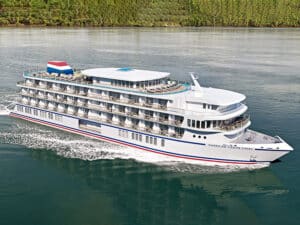
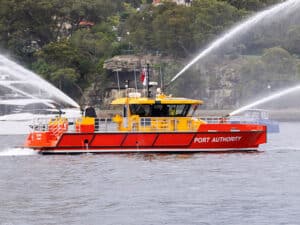
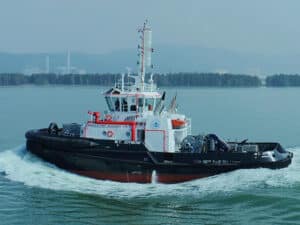
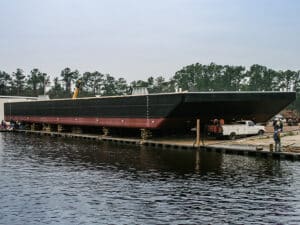
Leave a Reply
You must be logged in to post a comment.